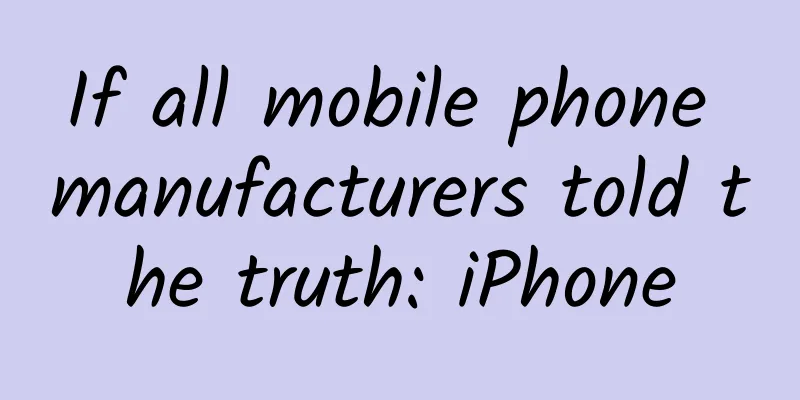Finally, today the health code will be unified!

|
I have waited for a long time and finally waited until today. When I saw the news that the National Health Commission issued the "Notice on Deepening the "Internet + Medical Health" "Five Ones" Service Action" (hereinafter referred to as the "Notice") on December 10, pointing out that it is necessary to promote the "one-code" integrated service and break down the information barriers of multiple codes that coexist and are not mutually interoperable, I believe that friends who need to travel frequently for work will think of the lyrics at the beginning. As a product rushed out during the epidemic, the health code has played an important role in epidemic prevention and control, and is even seen as a new solution for upgrading the modern urban public health and medical system. One code for travel, I have been looking forward to it for a long time Recalling my first business trip in 2020, before boarding the plane in Beijing, the staff at the terminal began to remind passengers early: Due to the need to prevent and control the epidemic, passengers traveling to Shenzhen must register for the Guangdong Health Code in advance. For the convenience of your travel, please register in advance to avoid delaying your journey. However, this is just the beginning of scanning the code. When you arrive in Shenzhen and prepare to check in to the hotel, the "Guangdong Health Code" you just registered a few hours ago is no longer useful. The hotel front desk asks you to register another health code through the "Shen i You" applet for confirmation. In addition, you need to scan the itinerary card to confirm the itinerary. Even the local public security department has a code and you need to fill in relevant information. When you return to Beijing after your trip, you need to fill in relevant information and report your trip through the "Beijing Heart Mutual Aid" applet at the airport. After arriving in Beijing, you also need to report your recent trips in the "Beijing Health Code" before you can show your green code. Such cumbersome operations make most business travelers feel inconvenienced. Is it a technical problem or a data interoperability problem? Tencent Cloud said that there is no technical difficulty in the interoperability and mutual recognition of health codes, and the main thing is to connect the data of local governments.
In fact, at a press conference held by the Joint Prevention and Control Mechanism of the State Council on March 7, 2020, Yang Wenzhuang, Director of the Population and Family Department of the National Health Commission, answered questions about why the "health codes" of various places are not universally used. Yang Wenzhuang said that first of all, the risk levels, response levels and prevention and control requirements of different provinces are different, so the standards for generating "health codes" in various places are not unified. Some are connected to the query interface of the national platform, some are based on the travel trajectory of the parties, and some are based on self-reported body temperature. In addition, the health code can only prove the physical condition of the person being tested at the time, and the subsequent health status cannot be simply judged based on this. Yang Wenzhuang went on to say that at present, there is no problem in sharing relevant data within the province. At the same time, relevant parties also support the promotion of the inter-provincial risk assessment mutual recognition mechanism. For example, Guangdong, Zhejiang, Sichuan, Hunan and other major labor exporting provinces have successively signed inter-provincial labor cooperation memorandums and established health monitoring mutual recognition mechanisms. This practice is worthy of recognition and reference. But why did the situation I experienced happen? In some places in Shenzhen, the Guangdong Health Code is not easy to use, and the local Shenzhen health code must be used. Relevant people said that this is largely due to the fact that staff in communities, hotels and other places lack relevant training and are unfamiliar with relevant policies. Health code adds medical consultation function 100 days after the health code was launched, we discussed whether the health code would "disappear". Luo Chaoliang, head of Tencent Health Code and vice president of Tencent Cloud, said that the health code is not a short-term behavior, but will gradually evolve into a new normal. He talked about his personal understanding: Under the grand strategy of Digital China, industrial digitalization and digital industrialization are being promoted in depth, which will inevitably result in the transformation of the physical world into the digital world, forming a mapped space. In this space in the future, how the government will conduct cross-regional governance and how the grassroots will manage mobile data are issues worth thinking about, and the health code is a model worth continuing to explore. Zhou Ping from the Information Technology Research Center of the China Electronics Standardization Institute said: "In the future, we need to establish a national emergency response system, that is, an emergency response system based on public health emergencies. The health code has a very good application foundation in the early stage, so there is no need to abandon it and build another system. This is the reason for its long-term existence." It can be seen that the health code is realizing relevant functions. The "Notice" released this time further requires that the medical treatment function of the health code be increased. The "Notice" proposes that all localities should accelerate the standardized application of residents' electronic health codes in accordance with the unified technical standards and specifications formulated and issued by the state, and focus on solving the problem of "one hospital, one card, and no mutual use" in medical and health services. Specifically, promote the replacement of medical and health institution medical cards with residents' electronic health codes, with the identity card number as the main index and other certificate numbers as supplements, and gradually realize the universal use of one code in the health industry. The key areas of the universal code include diagnosis and treatment services, public health services, chronic disease management, online information query, health education, blood management, etc. In addition to medical treatment, the health code will also add settlement function. The "Notice" requires the promotion of the "multi-code integration" application of residents' electronic health codes, financial payment codes, citizen cards, etc. On the basis of the switchable "cards" and "codes" in different departments, through the traceability management of "multi-code integration", in the "three medical linkage", gradually realize the effective supervision of medical treatment records, expense lists, electronic prescriptions, electronic medical records, medical expenses settlement records, etc., and realize the effective integration and application of residents' electronic health records and electronic medical records. In this regard, Liu Wenxian, deputy director of the Planning, Development and Informatization Department of the National Health Commission, said that the goal of promoting the "one card for all" in the medical and health system and "multi-code integration" across departments is to integrate the cards of many departments into one card, or into one identification system, and ultimately achieve "one code traceability" to solve the "nine dragons governing the water" problem of medical reimbursement for the people to the greatest extent. This is a major difficulty that needs to be overcome in this action notice, and its full implementation will also be a highlight! Liu Wenxian said. We must not let “smart construction” become a new “disease” for cities The birth of the health code is the best reflection of the achievements of my country's digital government reform and construction. But it is undeniable that while the health code provides convenience for social epidemic prevention, it does not take into account the aging group. There is a message on the Chinese government website: Now you need a "health code" to go to the supermarket, hospital, and bank. My grandparents are over 70 years old, and they can't use ordinary elderly mobile phones, let alone smartphones. It's too difficult for them to apply for a health code now. Elderly people like them can apply for it with their children, but those who don't have children or don't live with their children can't apply for and use the "health code" by themselves. This means they can't go to the supermarket to buy groceries, go to the bank to withdraw money, or go to the hospital to get medicine. There are still many people who can't use smartphones. Please ask the relevant departments to pay attention to this issue. The message was posted on March 8, 2020. However, in the subsequent news, we also saw that an elderly man in Dalian was refused to take the subway because he did not have a health code; a 94-year-old man was carried to a bank for facial recognition... This also makes people re-examine whether intelligence serves people or troubles them? In this regard, the "Notice" points out that offline manual services should be reasonably retained for groups such as the elderly and children, and intelligent technology barriers should be effectively resolved. Medical institutions at or above the second level should set up green channels without health codes at the entrance, and staff should be assigned to help query epidemic prevention health codes, assist in manually completing epidemiological history surveys, shorten waiting times, and provide more detailed and appropriate services for groups such as the elderly. It is worth noting that the Notice requires that in low-risk areas, except for special places and special personnel, health codes should generally not be checked. For groups such as the elderly who do not use or cannot operate smartphones, alternative measures such as reading ID cards, presenting paper certificates, relatives and friends acting on their behalf, or binding multiple epidemic prevention health codes to one person can be adopted. Strengthen the standardized use of epidemic prevention health code data, strengthen data security management, and effectively protect personal privacy. Only in this way can the intelligent upgrade of our city be more humane. |
<<: WeChat is cracking down on third-party links! All illegal diversions will be blocked
Recommend
Douyin short video live streaming tutorial, earning 100,000 yuan a month is not a legend! [Video course]
1. Change the Douyin account (add WeChat: 1867393...
Windows 10 Mobile's critical bug has been fixed
Last week, Microsoft provided Windows Mobile Buil...
African children holding signs video agent, how much does it cost to produce African children holding signs video?
How to make an advertisement like “Video of Afric...
North Star Business School's JD no-source store group course: no promotion, no fake orders, zero inventory, low cost
North Star Business School's JD No-Source Sto...
AD may not necessarily be Alzheimer's disease, but may be another difficult and complicated disease...
What strange diseases have you heard of? Let'...
Survey shows that most developers have never built a mobile app
Although there are more and more mobile phones in...
When imitating Pinduoduo’s red envelope strategy to attract new customers, pay attention to these points!
Imitating the mainstream gameplay in the industry...
Life service industry-the secret to attracting new customers and increasing usage!
Some people lament that life service platforms su...
180,000 trees! Why do we need to plant Haloxylon ammodendron to prevent wind and fix sand?
Review expert: Dong Wenpan, associate professor o...
How to like Douyin? Let us teach you how to get likes on Douyin!
Anyone who has used Tik Tok knows that if you wan...
LG 5K display screen removed from Apple shelves due to defects, new MacBooks no longer have screens available
What Apple never expected was that after its own ...
Rumor online: "It's OK to eat snakes"? Official response!
Recently, some self-media have spread rumors that...
"Invisible animals" are rare in nature. Scientists have developed a real-life version of the invisibility cloak. How effective is it?
"Invisible animals" are rare in nature....
In the future, can we travel by hydrogen-powered aircraft? | Tutu Science Fiction
Q In addition to airplanes, where else can hydrog...
China's first set of carbon-neutral Olympic award-winning equipment is full of details and is low-carbon and environmentally friendly!
Produced by: Science Popularization China Author:...









